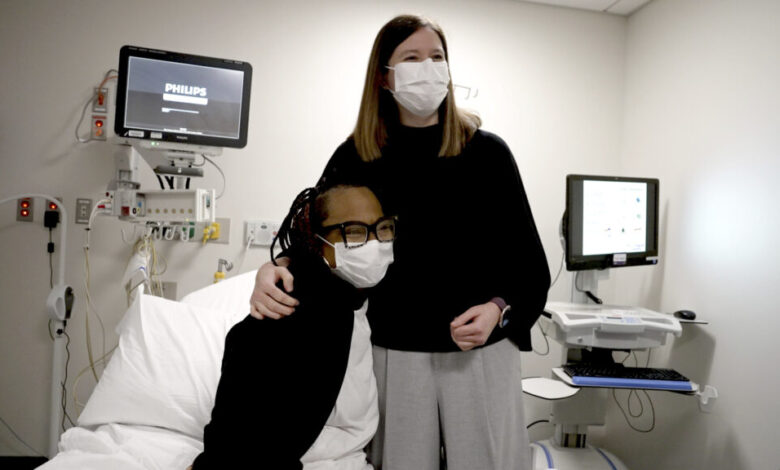Pig kidney removed from an Alabama woman after record 130 days

An Alabama woman who made headlines for living with a pig kidney for a record 130 days had the organ removed after her body started rejecting it, leading her to go back on dialysis. Towana Looney, the brave individual who underwent this groundbreaking procedure, is now recovering well after the removal surgery at NYU Langone Health and has returned home to Gadsden, Alabama. Despite the disappointing outcome, Looney expressed gratitude for the opportunity to be a part of this revolutionary research.
The use of pig organs for transplantation is a critical development in the medical field, as there is a severe shortage of transplantable human organs. With over 100,000 people on the U.S. transplant list, the need for viable organs is more pressing than ever. Scientists are genetically modifying pigs to make their organs more compatible with the human body, offering hope to those waiting for life-saving transplants.
Before Looney, only four other Americans had undergone experimental xenotransplants of gene-edited pig organs, with limited success. However, researchers are now focusing on less critically ill patients for these transplants, like the New Hampshire man who received a pig kidney earlier this year and is doing well. A comprehensive study on pig kidney transplants is set to commence this summer, marking a significant step forward in the field of xenotransplantation.
Looney, who had been on dialysis since 2016 due to her body’s rejection of a human kidney, decided to opt for a pig kidney as a last resort. Although the pig kidney initially functioned well, her body eventually began rejecting it. Dr. Robert Montgomery, Looney’s surgeon, explained that the decision to remove the kidney was made to avoid further complications and risks associated with anti-rejection drugs.
Rejection is a common concern in all types of organ transplants, and finding the right balance of immune-suppressing drugs is crucial for long-term success. Xenotransplantation presents unique challenges, as patients still require these drugs despite the genetic modifications made to the pig organs. As researchers continue to explore different combinations of medications, valuable lessons from cases like Looney’s will inform future clinical trials and advancements in the field.
Ultimately, the road to successful xenotransplantation will require patience and careful consideration of each patient’s unique circumstances. Dr. Montgomery emphasized the importance of incremental progress in this pioneering field, highlighting the need for continued research and collaboration to make this life-saving technology a reality for those in need. The world of technology is constantly evolving, with new innovations and breakthroughs changing the way we live and work. From the rise of artificial intelligence to the development of advanced robotics, the possibilities seem endless. One area that has seen significant growth in recent years is virtual reality (VR) technology.
Virtual reality has been around for decades, but it’s only in the last few years that it has really taken off. With the release of affordable VR headsets like the Oculus Rift and HTC Vive, more and more people are able to experience the immersive world of virtual reality.
One of the main uses of VR technology is in the world of gaming. Gamers can now step into a virtual world and interact with their surroundings in a way that was never before possible. From exploring fantastical landscapes to battling enemies in epic battles, the possibilities for gaming in VR are truly endless.
But gaming is just the tip of the iceberg when it comes to virtual reality. VR technology is also being used in a variety of other industries, from healthcare to education. In the medical field, VR is being used to train surgeons and medical students in a safe and controlled environment. This allows them to practice procedures and techniques without the risk of harming real patients.
In education, VR is being used to create immersive learning experiences for students. From exploring ancient civilizations to traveling through the human body, students can now learn in a way that is engaging and interactive. This technology has the potential to revolutionize the way we educate future generations.
But perhaps the most exciting use of virtual reality technology is in the field of entertainment. VR allows users to step into the world of their favorite movies and TV shows, experiencing the action and drama in a whole new way. From virtual concerts to immersive theater experiences, the possibilities for entertainment in VR are truly limitless.
As virtual reality technology continues to advance, we can expect to see even more exciting developments in the future. From new and improved headsets to innovative applications in a variety of industries, the potential for VR technology is truly endless. So strap on your headset and get ready to step into a whole new world of possibilities with virtual reality.




